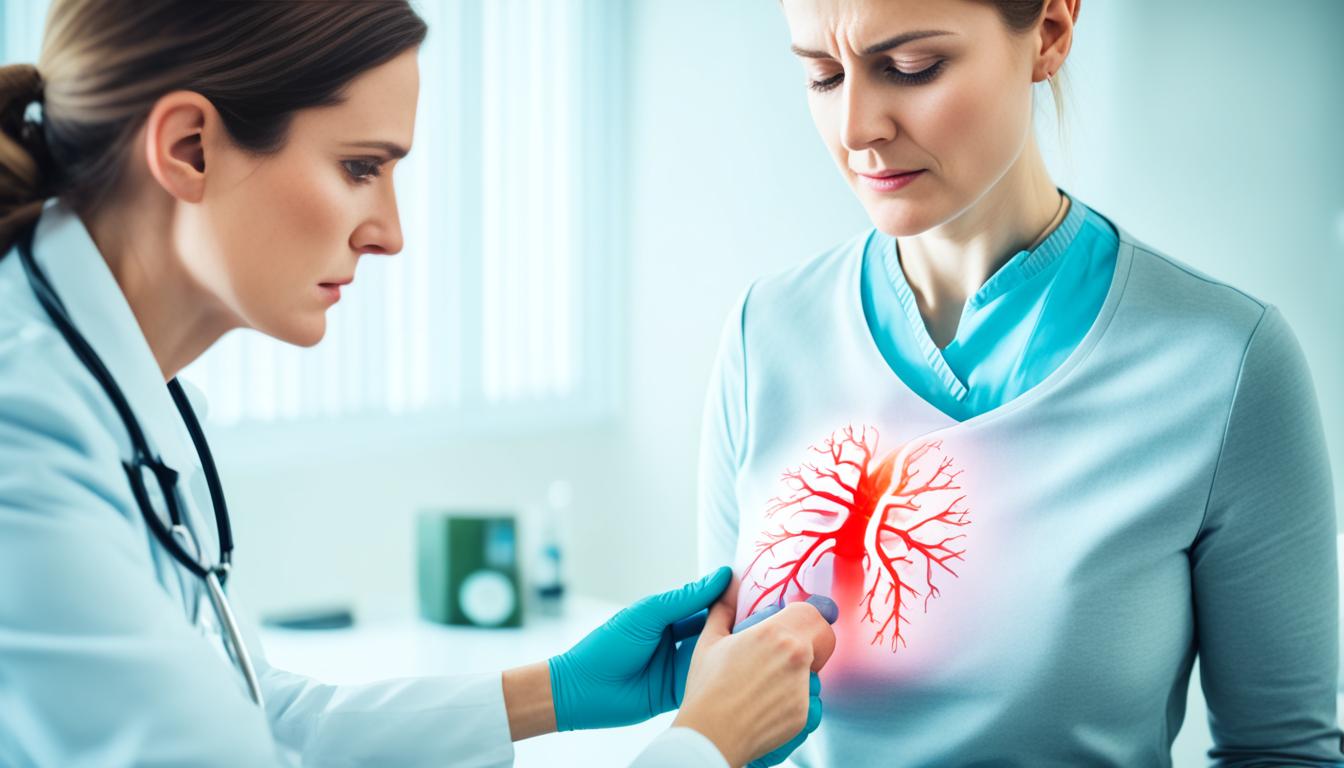Breast pain, or mastalgia, is a common and troubling issue for many women. It can happen in different ways and has various causes. We usually divide it into cyclic and non-cyclic types.
Cyclic breast pain links to the menstrual cycle. Women might feel this pain during their fertile years and menopause. It comes with breast swelling and tenderness, due to changing estrogen and progesterone levels.
Non-cyclic breast pain isn’t linked to hormones. It can feel like aches, burns, or a constant pain in a specific area. Skin changes might also happen, like redness or dimples. Causes include various breast tissue changes, imbalanced fatty acids, infections, trauma, some medications, and skin issues.
If you have breast pain, it’s important to see a doctor. They will do a physical exam and ask about your symptoms and history. They might do tests like mammograms or biopsies to find the cause.
The right treatment depends on what’s causing your pain. For cyclic pain, doctors might prescribe hormonal drugs or recommend reducing caffeine and using pain relievers. Non-cyclic pain will need different treatments, like antibiotics for infections, pain management, or surgery for some cases.
Stem cell therapy is an emerging option for breast pain. It’s shown benefits for several conditions. But, using it for breast pain is new, and researchers are studying its safety and how well it works.
Always talk to a doctor if you’re dealing with breast pain. They can offer the best care for you.
Key Takeaways:
- Breast pain can be cyclic or non-cyclic, linked to hormonal changes or not.
- Seeing a doctor is key to finding the right treatment for your breast pain.
- You might get hormonal drugs, lifestyle advice, targeted treatments, or new options like stem cell therapy.
- We need more research to know if stem cell therapy is a good option for breast pain.
- If you have breast pain, get help from a medical professional for care that fits your situation.
Cyclic and Non-Cyclic Breast Pain: Causes and Symptoms
Learning about cyclic and non-cyclic breast pain helps women take charge of their breast health. This pain can happen during the monthly cycle or at any time. Knowing what sets these pains apart can help find the right care.
Cyclic Breast Pain
Cyclic breast pain happens with the menstrual cycle. It’s common for women of childbearing age and those in menopause. Symptoms may include:
- Pain and heaviness in the breasts
- Swelling or lumps in the breast tissue
- Pain that goes to the armpit
The pain’s strength changes and usually stops after the period ends. Hormone ups and downs cause much of this pain. But, issues like breast tissue changes, fatty acid differences, infections, and some drugs can also cause it.
Non-Cyclic Breast Pain
Non-cyclic breast pain isn’t linked to the menstrual cycle. It’s more about a general ache or burning in one spot of the breast. Sometimes, you may see skin changes like redness or dimpling.
- Skin changes, such as redness or dimpling
This type of pain might be from hormone imbalances, tissue changes, infections, or drugs. Unlike cyclic pain, you can’t predict when this pain will occur.
If you have ongoing breast pain, seeing a doctor is key. They can figure out what’s wrong and suggest the best treatment. Understanding these types of breast pain empowers women to look after their breast health better.
Diagnosis and Treatment Options for Breast Pain
Feeling breast pain means it’s time to see a healthcare pro. They will check you out and talk about what’s going on. Depending on the problem, they might do some scans or tests.
If your pain comes and goes with your cycle, it might be because of hormones. The doctor could give you medicine like birth control or suggest cutting down on caffeine. Over-the-counter pain meds can also help.
Sometimes, breast pain doesn’t link to your cycle. For this, treatments can vary a lot. You might need antibiotics if there’s an infection or manage pain in other ways. In severe cases, surgery could be an option. Whatever you do, stick to the plan and stay in touch with your doctor.
Getting help for breast pain is important. Health pros can help you feel better and keep your breasts healthy.

